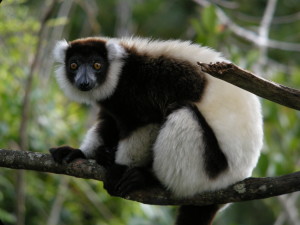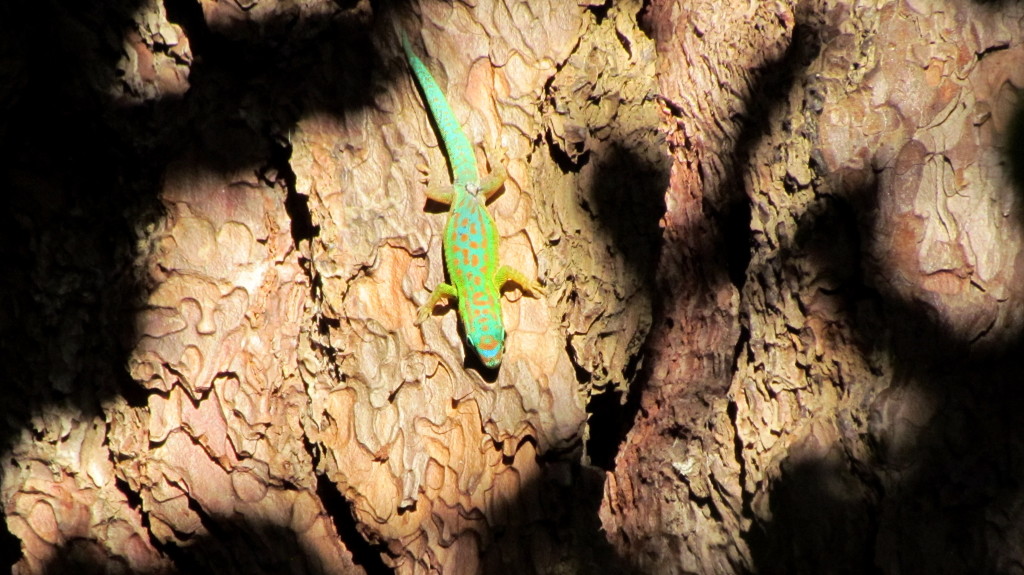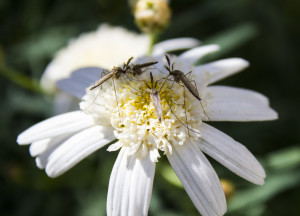by Emily Li
We have a lot to thank pollinators for this National Pollinator Week. Not only do they provide every third bite of food, but they also add $217 billion dollars to the global economy and help support healthy ecosystems. But can we even identify a pollinator when we see one?
Picture pollinators—from fat, sunlit bumblebees hovering lazily from flower to flower, to yellow butterflies flitting among pollen-dusted petals in brilliant flashes of antennae and wing. If you’re feeling especially imaginative, you might think of the delicate, curved beaks of hummingbirds dipped into blossoms larger than themselves. But while bees and butterflies share the limelight, underappreciated pollinators from all walks, wings, and wades of life quietly help to create the next generation of flowering plants.
The world’s largest pollinator

Black and white ruffed lemur (Frank Vassen)
Pollinators are usually thought of as miniature—even hummingbirds, which are on the larger side of the celebrated pollinator scale, are small enough to fit in the palm of a child’s hand. Another common misconception is that pollinators generally have wings. And yet, with a sweet tooth for almost 130 different fruits, black and white ruffed lemurs—the largest known pollinators in the world—shatter these stereotypes. In fact, these lemurs are believed to be the main pollinators of the traveler’s palm: a 40-foot high tree with fan-shaped leaves and pale yellow-white flowers. By nimbly prying apart the tough bract surrounding the flower, the lemurs can stick their long snouts and tongues deep inside a blossom. In the process, they collect pollen on their fur and muzzles, which they then carry to the next flower on their menus. Several studies suggest that the tree has evolved to depend upon lemurs for pollination, as the large flowers provide enough nectar to sustain larger animals and are relatively difficult to pry open. Bees would have a much harder time!
Bees, butterflies, blue-tailed geckos?

Blue-tailed day gecko (Josh Noseworthy)
Though geckos are renowned for selling auto insurance, their role as pollinators is far less appreciated. And while this holds true for several groups of geckos, from the mottled green Hoplodactylus to brightly-colored Phelsuma geckos, blue-tailed day geckos are especially vital.
The pink, bell-shaped flowers of the rare Trochetia tree are found only on the Mascarene Islands, a group of three volcanic islands in the Indian Ocean. Due to invasive species and the near extinction of other historical pollinators, Trochetia’s survival now depends on the blue-tailed day gecko. The gecko is also the only pollinator of the critically endangered Roussea simplex, a woody liana vine with flower petals that resemble orange peels. Both plant species use special strategies to tempt the gecko, suggesting histories of co-evolution. Trochetia produces colored nectar, while Roussea flowers smell sweetly of yeast. But the gecko has problems of its own, from predators like the Mauritius kestrel to invasive ant species. While our blue-tailed friend may be alone in combating those particular issues, we can help them out in pollinator popularity contests by spreading the word about their importance in conserving rare plants. Don’t you wish you received the same amount of praise from chowing down on your favorite snacks?

Pollinating mosquitoes (Ignacio Torres)
Most hated pollinator?
Mosquitoes might be most famous for sucking blood, but it isn’t the main part of their diet. Females drink blood only while reproducing, and males don’t need it at all. So what is one of humanity’s least favorite insects’ go-to meal? The surprising answer—plant nectar—highlights one of the mosquitoes’ few redeeming qualities. While feeding, the mosquito’s eye rubs against a cluster of pollen, which then brushes against the stigma of another flower after the mosquito moves on. Although mosquitoes are not the primary pollinators for many plants, they are important for several rare orchids, such as the blunt-leaved orchid, early coralroot orchid, and endangered monkey face orchid. They also pollinate many plants of the Umbelliferae family, which include carrots, celery, cumin, dill and parsnips. Hopefully the next time you spot a mosquito, its proboscis is buried deep into a flower bud, rather than embedded into your skin!
The list of unexpected pollinators stretches across the globe—from honey possums with prehensile tails, to colorful parrots with hairy tongues (the better to gather nectar), to largely carnivorous Cape grey mongooses that sniff out nectar-producing flowers as sweet midnight snacks. This National Pollinator Week, take a moment to celebrate all pollinators—beyond the first yellow-and-black buzzing species that comes to mind!
Photos used under Creative Commons licenses from Frank Vassen, Josh Noseworthy, and Ignacio Torres.

